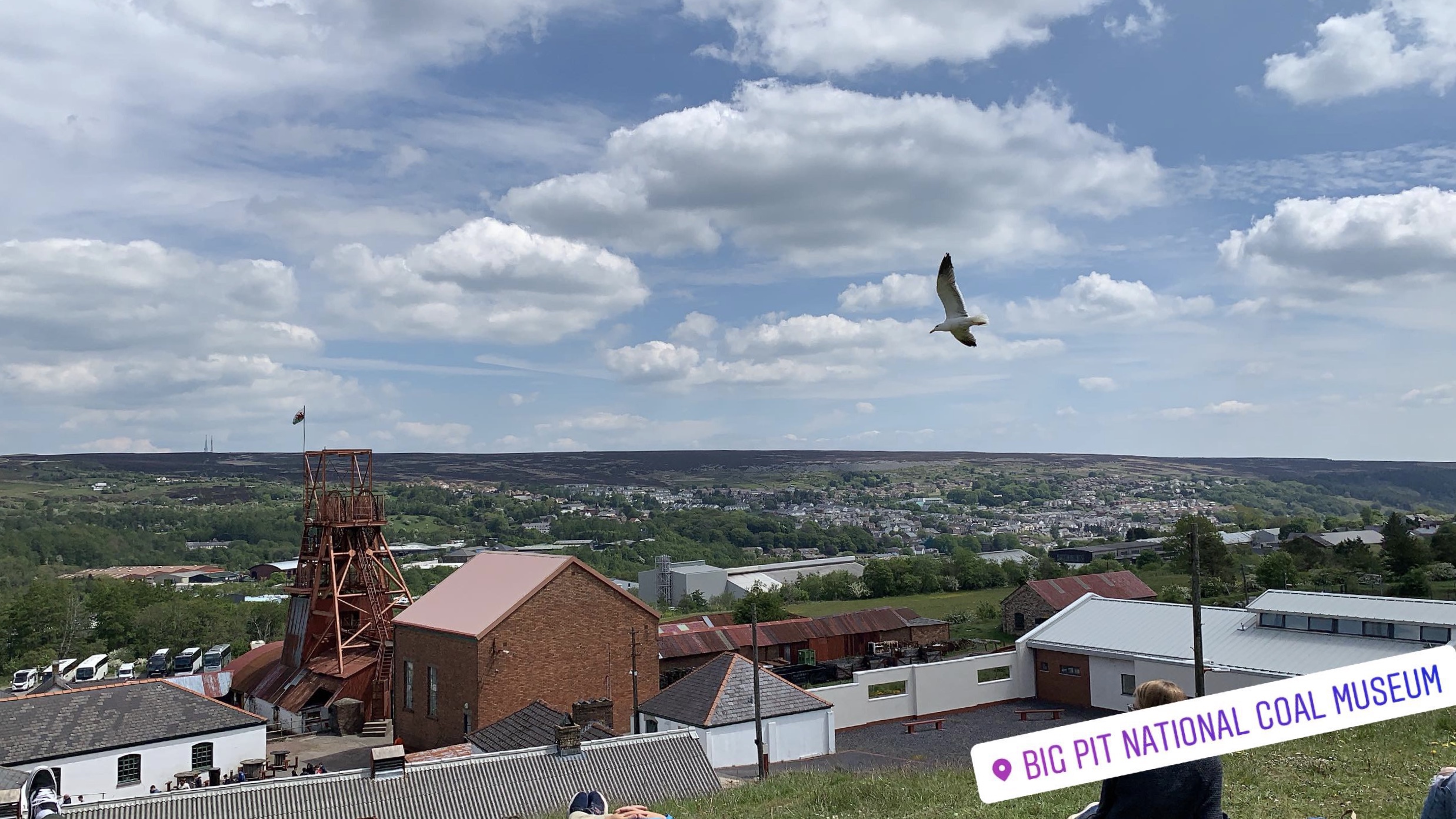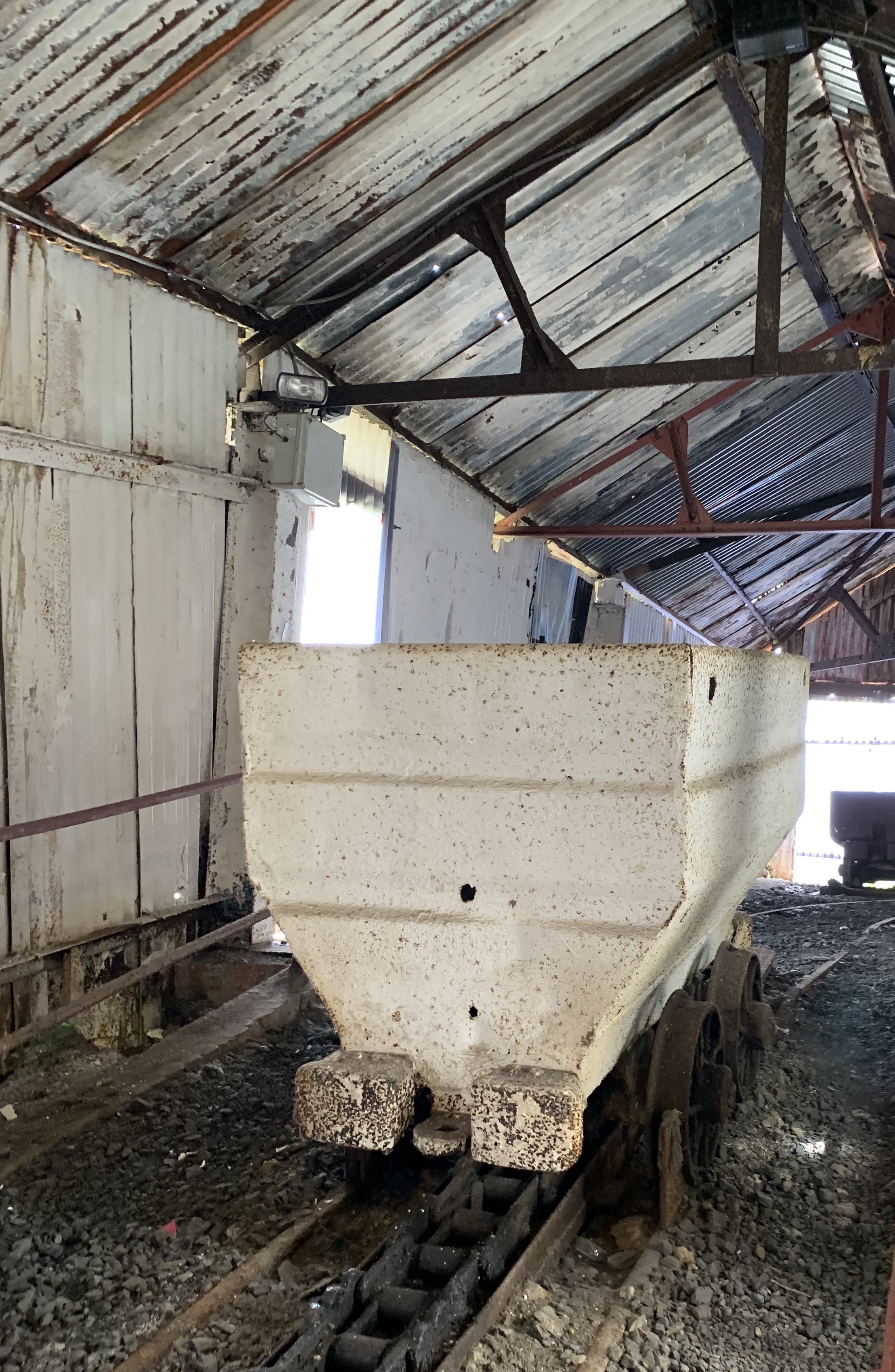
Today we visited the Big Pit National Coal Museum in Blaenavon, Wales. The site of the Big Pit is an old coal mine that was in operation from 1880 to 1980.



When we began our excursion, we were prepared with just a few items- a helmet, a head lamp, and a belt that held both the battery to our lamp as well as an oxygen mask for safety (see photos below). We could not bring any phones or cameras, as this would cause a risk of fire or explosion. Unfortunately, this also means that I am limited in my ability to share photographs of what I saw after this point. However, I will try my best to describe what I did see.


After quickly being clothed with our supplies, we piled into the elevator and descended 90 meters under the ground. Our class was led by a previous coal miner himself who brought us down to explore what it was like for those that used to work in the coal mines.

Quite honestly, the conditions were a bit startling. As we traveled downward into the ground, we felt the air gradually getting cooler. When we arrived, we quickly discovered why it was that we needed our head lamps. Without our lights turned on, it would be completely pitch black and dark down there. In previous years when the mine was in operation, this condition was common. Many individuals working at the mine used lamps, but if they blew out or the light died, they would be left in the dark for hours until others arrived.
Additionally, there wasn’t much room and we often had to duck down so that we wouldn’t hit our heads when we were walking. Even just having to squat down like that for a few minutes wasn’t very comfortable, so I couldn’t even begin to imagine what it must have felt like for the workers who spent hour after hour and day after day there.
Finally, the ground of the pit was wet. We all had to be careful not to slip and fall.
Aside from having the opportunity to take notice of these shocking conditions, we also learned a lot about the history of the Big Pit and the coal industry in the United Kingdom as a whole. Before the invention of machinery, in order to transport the coal out of the Pit, women and later horses would drag large and heavy carts for long distances (see photo below). Moreover, children as young as six years old were also recruited to work in the mines. These were terrible and often dangerous conditions for all. Many lost their lives when walls collapsed or fires and explosions occurred.

Visiting the Big Pit was an engaging and eye-opening experience for me. I wondered why it was that we continued to place humans in such dangerous conditions simply to extract a dirty, polluting, and nonrenewable energy source.
Today, all coal mines have been closed in the United Kingdom. In place of coal, the nation has actually instead been turning to more renewable sources of energy like wind, solar, and hydro power. In fact, I saw numerous solar panels at the Big Pit, which I found to be an irony in and of itself (see photos below). Hopefully we can take what we have learned from this experience to reduce our demand for coal and begin to focus on more renewable sources of energy as well.


-Deana DiBenedetto